A Look Back at Mobile System GB, Pokémon Crystal’s Online Service
Equipped with the Mobile Adapter GB and a copy of Pokémon Crystal, Japanese owners were able to trade with people far away, long before the days of Nintendo Wi-Fi Connection. Find out what it was like back then!
Welcome to the Pokémon Communication Center
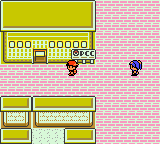 Upon arriving at Goldenrod City, players would notice — in place of a standard Pokémon Center — the PokéCom Center (Pokémon Communication Center). It’s here that players had access to even more online functions, such as the Trade Corner and the Pokémon News Machine, available only to those with a Mobile Adapter who have registered with the Mobile System GB.
Upon arriving at Goldenrod City, players would notice — in place of a standard Pokémon Center — the PokéCom Center (Pokémon Communication Center). It’s here that players had access to even more online functions, such as the Trade Corner and the Pokémon News Machine, available only to those with a Mobile Adapter who have registered with the Mobile System GB.
These functions utilised the Mobile System GB to connect to a Mobile Center — the servers powering Crystal’s online functionality. Cystal’s Mobile Center was not a free service — thus, there were various fees to actually use these features. The fees were presumably charged on the player’s cell phone bill. These fees ranged from 10 to 100 yen — approximately 10¢ to $1.00 at the time. Contrast with today, where similar services are available via Nintendo Network at no cost (although with Nintendo Switch Online being a paid service, whether Pokémon will charge for services in the future is up in the air.)

Trade Corner
 The Trade Corner (different from the Trade Center on the second floor) at the middle of the PokéCom Center worked much like the Global Trade System (GTS) of modern-day Pokémon games. The attendant would ask for you to choose a Pokémon from your party for trade, then ask for the Pokémon you want. The game would present a list of Pokémon you’ve seen or caught, and allow you to specify the desired gender. The service cost 10 yen per trade, which the player would be notified about before proceeding with their desired trade.
The Trade Corner (different from the Trade Center on the second floor) at the middle of the PokéCom Center worked much like the Global Trade System (GTS) of modern-day Pokémon games. The attendant would ask for you to choose a Pokémon from your party for trade, then ask for the Pokémon you want. The game would present a list of Pokémon you’ve seen or caught, and allow you to specify the desired gender. The service cost 10 yen per trade, which the player would be notified about before proceeding with their desired trade.
At this point, players would need to wait for two hours before checking the status of the trade — there was no way to withdraw the trade offer during this time. After at least two hours, if the trade had been completed, the player was able to pick up the Pokémon that they requested. Only if nobody has accepted the trade at this point would player be given the opportunity to withdraw the Pokémon they were offering.
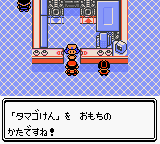

The Trade Corner also had an additional function — in the Japanese versions, it’s where players would receive the Odd Egg, which could hatch a Pichu, Cleffa, Igglybuff, Tyrogue, Smoochum, Elekid or Magby. The old man at the Day Care would give you an Egg Ticket which he’d received from the newly-built PokéCom Center. As part of a campaign that ran for the entirety of the Mobile Center service, the Trade Corner attendant would connect online and exchange this ticket for the egg.
The Odd Egg directly to players by the old man in English versions of Crystal had a 14% chance of hatching into a shiny Pokémon. However, accounts from Japanese owners of the game have suggested that the Odd Egg downloaded from the Mobile Center, had a 50% chance of hatching a shiny.
Pokémon News
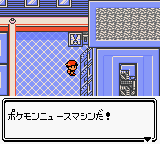 Delivered straight to your Game Boy Color, Pokémon News was a monthly publication that cost 100 yen per issue and was available using the News Machine. It delivered fun content such as quizzes and mini-games, and also provided rankings for play records in the game. Players could view these records and submit their own — much like Record Mixing, but on a grander scale. These records could be filtered by region or by postcode, so it would be entirely possible to see people you’d know in these rankings.
Delivered straight to your Game Boy Color, Pokémon News was a monthly publication that cost 100 yen per issue and was available using the News Machine. It delivered fun content such as quizzes and mini-games, and also provided rankings for play records in the game. Players could view these records and submit their own — much like Record Mixing, but on a grander scale. These records could be filtered by region or by postcode, so it would be entirely possible to see people you’d know in these rankings.
To facilitate this, Pokémon Crystal tracked all kinds of details such as the number of steps a player walked, the number of battles a player has participated in, trades, largest Magikarp, times Mystery Gift was used, times certain HMs were used in the field, and many more. These details would also be logged in future Pokémon games and shown to other players by various means, such as Record Mixing and Game Sync.
You can check out a few debug news issues, the rankings functionality and the mini-games (a cry quiz and a trivia based on obscure facts) in this video posted by Háčky:
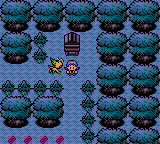 That’s not all — specific issues contained mini-games, which upon completion would award the player a GS Ball, used to unlock Celebi. News issues available on April, May and August of 2001 had a mini-game followed by a quiz, which upon completion once a player had 16 badges, would then be awarded the ball. The Trade Corner attendant would congratulate the player and hand over the GS Ball, which was to be taken to Kurt to inspect. That same attendant will make her return in the eShop versions of Pokémon Crystal, appearing in the Goldenrod Pokémon Center after the Elite Four has been defeated. We’ll have an article following up on the specifics of the GS Ball minigame later, as well as a guide on how to unlock Celebi in the eShop versions of the game.
That’s not all — specific issues contained mini-games, which upon completion would award the player a GS Ball, used to unlock Celebi. News issues available on April, May and August of 2001 had a mini-game followed by a quiz, which upon completion once a player had 16 badges, would then be awarded the ball. The Trade Corner attendant would congratulate the player and hand over the GS Ball, which was to be taken to Kurt to inspect. That same attendant will make her return in the eShop versions of Pokémon Crystal, appearing in the Goldenrod Pokémon Center after the Elite Four has been defeated. We’ll have an article following up on the specifics of the GS Ball minigame later, as well as a guide on how to unlock Celebi in the eShop versions of the game.
Battle Tower on a nationwide scale
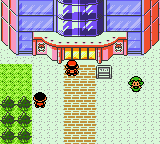 The Battle Tower, located west of Olivine City, was accessible at any time in the international versions of Pokémon Crystal. However, in Japan, the facility was an online-exclusive feature that was only open once the Mobile Adapter GB was connected. As a Mobile Center service, access to the Battle Tower was charged at 10 yen per session — can you imagine a Battle Tower costing real-life money today?
The Battle Tower, located west of Olivine City, was accessible at any time in the international versions of Pokémon Crystal. However, in Japan, the facility was an online-exclusive feature that was only open once the Mobile Adapter GB was connected. As a Mobile Center service, access to the Battle Tower was charged at 10 yen per session — can you imagine a Battle Tower costing real-life money today?
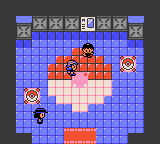 Like most battle facilities following it, the Battle Tower was a knockout challenge with seven Trainers in total. Players would pick the Pokémon level they wished to challenge, and then pick a numbered room to battle in, and the seven AI-controlled trainers they’d been matched against would be based on uploaded data from players across the nation who participated in the same room. The battle messages that players could input in the Mobile menu would be used as phrases here, and the Trainers’ avatars would be preselected from the pool of NPC trainer classes available in the game.
Like most battle facilities following it, the Battle Tower was a knockout challenge with seven Trainers in total. Players would pick the Pokémon level they wished to challenge, and then pick a numbered room to battle in, and the seven AI-controlled trainers they’d been matched against would be based on uploaded data from players across the nation who participated in the same room. The battle messages that players could input in the Mobile menu would be used as phrases here, and the Trainers’ avatars would be preselected from the pool of NPC trainer classes available in the game.
Successive wins would raise your rank, which could be viewed on a leaderboard in the Battle Tower lobby. Winning would also increase the likelihood someone else would have to challenge you when they visit the same room. If you did well, it was possible for you to become the room’s leader!
If you’ve been playing Pokémon for a while, you might notice the similarities between this Battle Tower’s format and the way the Wi-Fi Battle Tower rooms and the Wi-Fi Train work in the fourth- and fifth-generation Pokémon games — right down to downloading trainer data and ranking the player against them. Unfortunately, the Nintendo Wi-Fi Connection has been shut down, so the Wi-Fi Battle Tower and the Wi-Fi Train in the Battle Subway no longer function — officially, anyway.
Connecting to Pokémon Stadium
 By connecting Pokémon Crystal to Pokémon Stadium Gold/Silver (internationally titled as Pokémon Stadium 2) players could unlock the Mobile Stadium menus for both games. On Pokémon Crystal’s end, the Mobile Stadium option was used to download “battle data” — turn-by-turn recordings of officially-held Pokémon battles, much like the Battle Videos in recent Pokémon games. Mobile battles at the Colosseum could also be saved for use in Mobile Stadium.
By connecting Pokémon Crystal to Pokémon Stadium Gold/Silver (internationally titled as Pokémon Stadium 2) players could unlock the Mobile Stadium menus for both games. On Pokémon Crystal’s end, the Mobile Stadium option was used to download “battle data” — turn-by-turn recordings of officially-held Pokémon battles, much like the Battle Videos in recent Pokémon games. Mobile battles at the Colosseum could also be saved for use in Mobile Stadium.
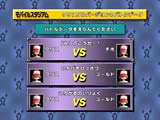 Unlike Battle Videos, however, battle data could not be replayed within Pokémon Crystal — and that’s where Stadium 2 comes in. Stadium 2 was able to show the recorded battles — both downloaded videos and ones you’ve saved from the Colosseum — in full 3D. What’s more, players were able to start mock battles against either of the participating teams, against an AI-controlled version of the trainers in the battle data — perfect for figuring out how to beat similar trainers at the next official tournament, or figuring out new strategies to beat your friends. Up to three sets of battle data could be saved on a Crystal cart, but could be transferred to Stadium 2, which had room for six more battle data sets.
Unlike Battle Videos, however, battle data could not be replayed within Pokémon Crystal — and that’s where Stadium 2 comes in. Stadium 2 was able to show the recorded battles — both downloaded videos and ones you’ve saved from the Colosseum — in full 3D. What’s more, players were able to start mock battles against either of the participating teams, against an AI-controlled version of the trainers in the battle data — perfect for figuring out how to beat similar trainers at the next official tournament, or figuring out new strategies to beat your friends. Up to three sets of battle data could be saved on a Crystal cart, but could be transferred to Stadium 2, which had room for six more battle data sets.
Battle rules were also distributed via the Mobile Center service — players were able to download official rule sets, which could be transferred to Stadium 2 to hold battles against. A similar feature returns in Pokémon Sun and Moon, allowing players to download rule sets such as the current World Championship Rules.
Battle data was available from the Mobile Center service, with sets of battle data available for download at 10 yen each. Battle data for Japan’s Nintendo Cup 2000 was made available via the service, with selected battle data sets downloadable at different times of the day. Videos of the national tournament’s battle data replays have even been posted to YouTube for posterity.
